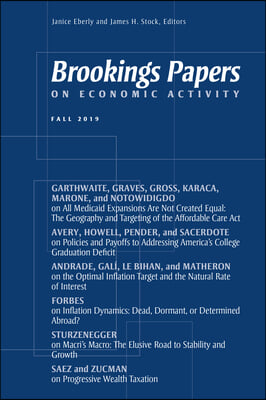The Fiscal Policy Response to the Pandemic
IF 2.8
3区 经济学
Q1 ECONOMICS
引用次数: 26
Abstract
ABSTRACT:This paper provides estimates of the size and determinants of the fiscal policy response to the COVID-19 pandemic across thirty advanced economies. In contrast to the fiscal response to financial crises, I find no evidence that fiscal space was an important determinant of the aggressiveness of pandemic fiscal packages. Focusing in on the US fiscal policy response, I discuss the policy implications of the unique features of a pandemic recession. I argue that the social insurance and public health components of the $5.2 trillion US package, such as expanded unemployment insurance and government funding of vaccine development and distribution, were highly appropriate, whereas broad-based stimulus measures, such as the onetime payments to households, were not. Finally, I consider some of the longer-run consequences of the US fiscal policy actions. The aggressive fiscal expansion, along with extensive private saving during the pandemic, is likely to generate rapid growth over the next few years. The rise in the debt-to-GDP ratio, caused by both the policy response and the pandemic recession itself, could limit future fiscal action if anti-debt sentiment reemerges.应对疫情的财政政策
摘要:本文对30个发达经济体应对COVID-19大流行的财政政策规模和决定因素进行了估计。与应对金融危机的财政措施不同,我没有发现任何证据表明,财政空间是流行病财政方案力度的重要决定因素。我把重点放在美国的财政政策应对上,讨论了大范围衰退的独特特征对政策的影响。我认为,5.2万亿美元一揽子计划中的社会保险和公共卫生部分,如扩大失业保险和政府为疫苗开发和分发提供资金,是非常适当的,而基础广泛的刺激措施,如一次性向家庭付款,则不是。最后,我考虑了美国财政政策行动的一些长期后果。积极的财政扩张,加上疫情期间大量的私人储蓄,可能会在未来几年带来快速增长。债务与gdp之比的上升是由政策应对措施和大流行衰退本身造成的,如果反债务情绪再次出现,这可能会限制未来的财政行动。
本文章由计算机程序翻译,如有差异,请以英文原文为准。
求助全文
约1分钟内获得全文
求助全文
来源期刊

Brookings Papers on Economic Activity
ECONOMICS-
CiteScore
10.10
自引率
0.00%
发文量
12
期刊介绍:
The Brookings Papers on Economic Activity (BPEA) is a semi-annual academic conference and journal that pairs rigorous research with real-time policy analysis to address the most urgent economic challenges of the day. Working drafts of the papers are presented and discussed at conferences typically held twice each year, and the final versions of the papers and comments along with summaries of the general discussions are published in the journal several months later. The views expressed by the authors, discussants and conference participants in BPEA are strictly those of the authors, discussants and conference participants, and not of the Brookings Institution. As an independent think tank, the Brookings Institution does not take institutional positions on any issue.
 求助内容:
求助内容: 应助结果提醒方式:
应助结果提醒方式:


